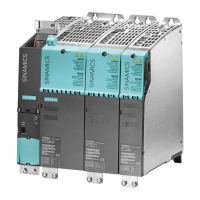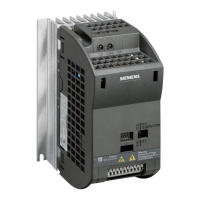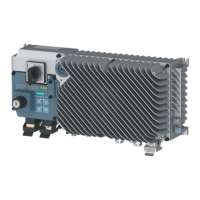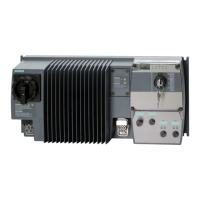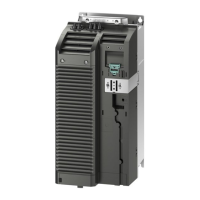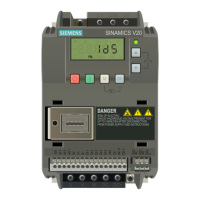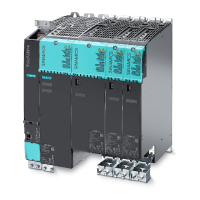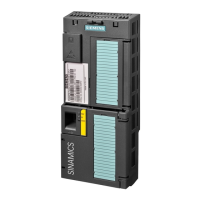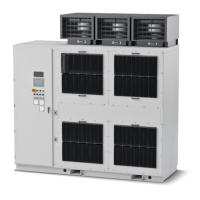Converters provide the following options to synchronize the time:
Synchronization type Accuracy
Basic synchronization approx. 100ms
Synchronization using ping compensation for non-isochronous communication approx. 10 ms
Synchronization using ping compensation for isochronous communication approx. 1 ms
Principle of operation of time synchronization
Basic synchronization
The control system transfers the time to the converter at time intervals that you specify in the
control system. Transfer is realized acyclically in the UTC format. The converter accepts this
time as soon as transfer has been completed without correcting the transfer duration. The
converter logs alarms and warnings based on this time.
Time synchronization with ping compensation
At intervals that you specify in the control system, the control system sends a ping (a positive
signal edge) cyclically to the converter. Simultaneously, in acyclic operation, the device sends
the time in the UTC format in what is known as "snap".
As soon as the ping has been received in the drive, a timer starts which measures the time
until the snap has been completely transferred. The drive accepts the time that the snap
transfers. It then corrects it by the time that has expired between receiving the ping and the
complete transfer of the snap.
If the snap has not been transferred within 5 s after receiving the ping, then this synchronization
cycle is not used.
&RQWURO
&RQYHUWHU
3LQJ
3LQJ
6QDSWLPH
7
3LQJ
7
VQDS
&\FOHIRUWLPHV\QFKURQL]DWLRQ
W
W
W
Figure A-41 Ping snap
Differences for isochronous and non-isochronous communication:
Communication Description
Isochronous The ping compensation value is determined in the converter.
not isochronous You can influence the accuracy of the ping compensation using the PZD sam‐
pling time (p2048).
Communication
A.1 Communication
Industrial Security
Configuration Manual, 08/2017, A5E36912609A 219
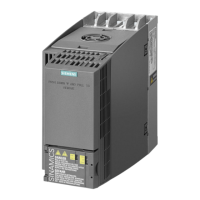
